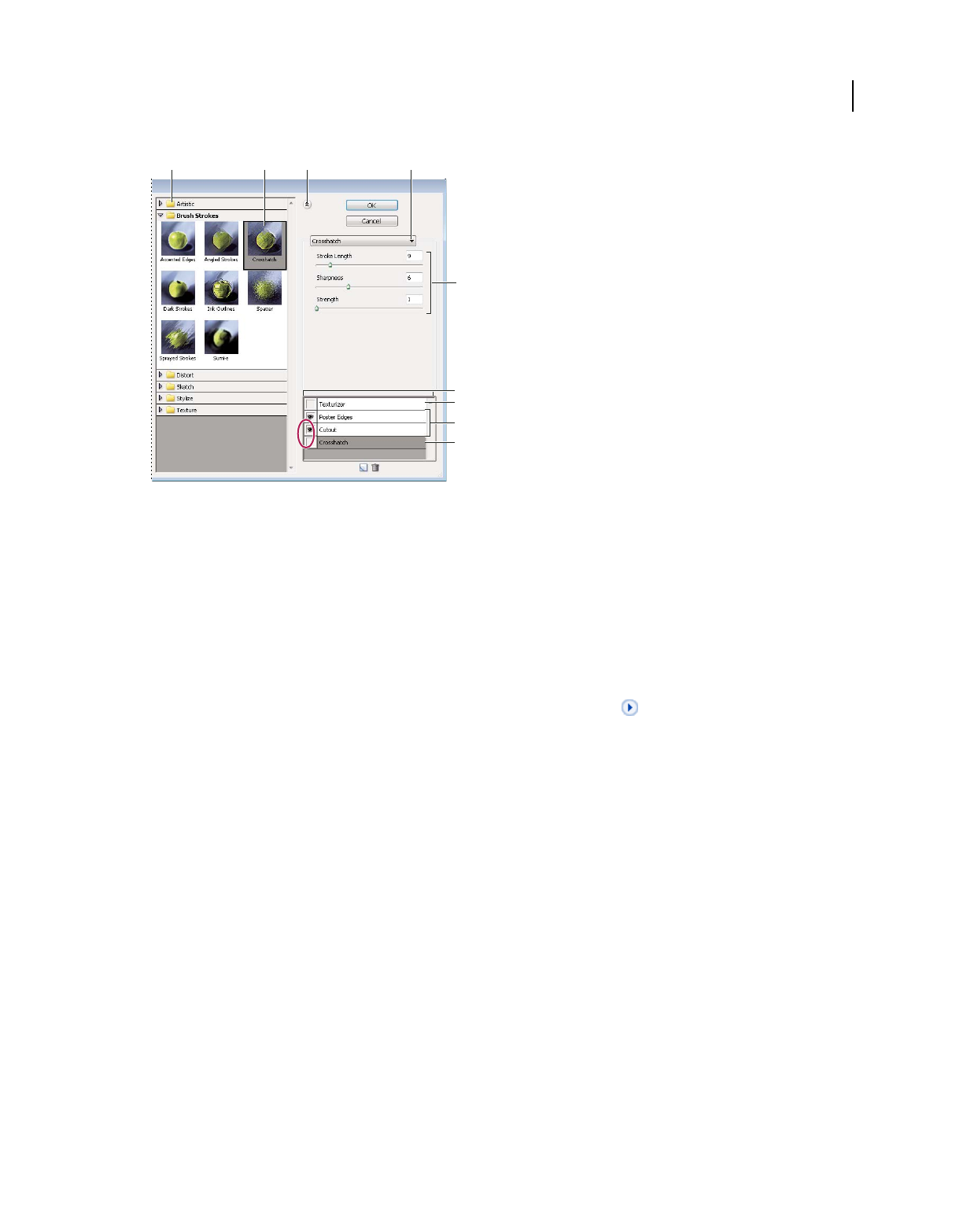
182
USING PHOTOSHOP ELEMENTS 8
Filters, effects, styles, and artwork
Last updated 7/26/2011
Filter Gallery dialog box
A. Filter category B. Thumbnail of selected filter C. Show/Hide filter thumbnails D. Filters menu E. Options for selected filter F. List of filter
effects to apply or arrange G. Hidden filter H. Filters applied cumulatively but not selected I. Filter selected but not applied
More Help topics
“Using the Effects panel” on page 173
Texture and glass surface options
The Conté Crayon, Glass, Rough Pastels, Texturizer, and Underpainting filters have texturizing options. These options
make images appear as if they were painted onto textures, such as canvas and brick, or viewed through glass blocks.
Texture Specifies the type of texture to apply. You can also click Load Texture to specify a Photoshop file.
Scaling Increases and decreases the effect on the image surface.
Relief (if available) Adjusts the depth of the texture’s surface.
Light Angle (if available) Sets the direction of the light source on the image.
Invert Reverses the surface’s light and dark colors.
Improve performance with filters and effects
Some filters and effects are memory intensive, especially when applied to high-resolution images. You can use these
techniques to improve performance:
• Try filters and settings on a small selected area of the image.
• Try filters and settings on a smaller, resized copy of your image. When you’re satisfied with the results, apply the
filter with the same settings to your original image.
• Free up memory before running the filter or effect by clearing the clipboard, the undo history, or both. Choose
Edit
> Clear > [command].
• Exit from other applications to make more memory available.
ABC D
E
G
H
I
F
